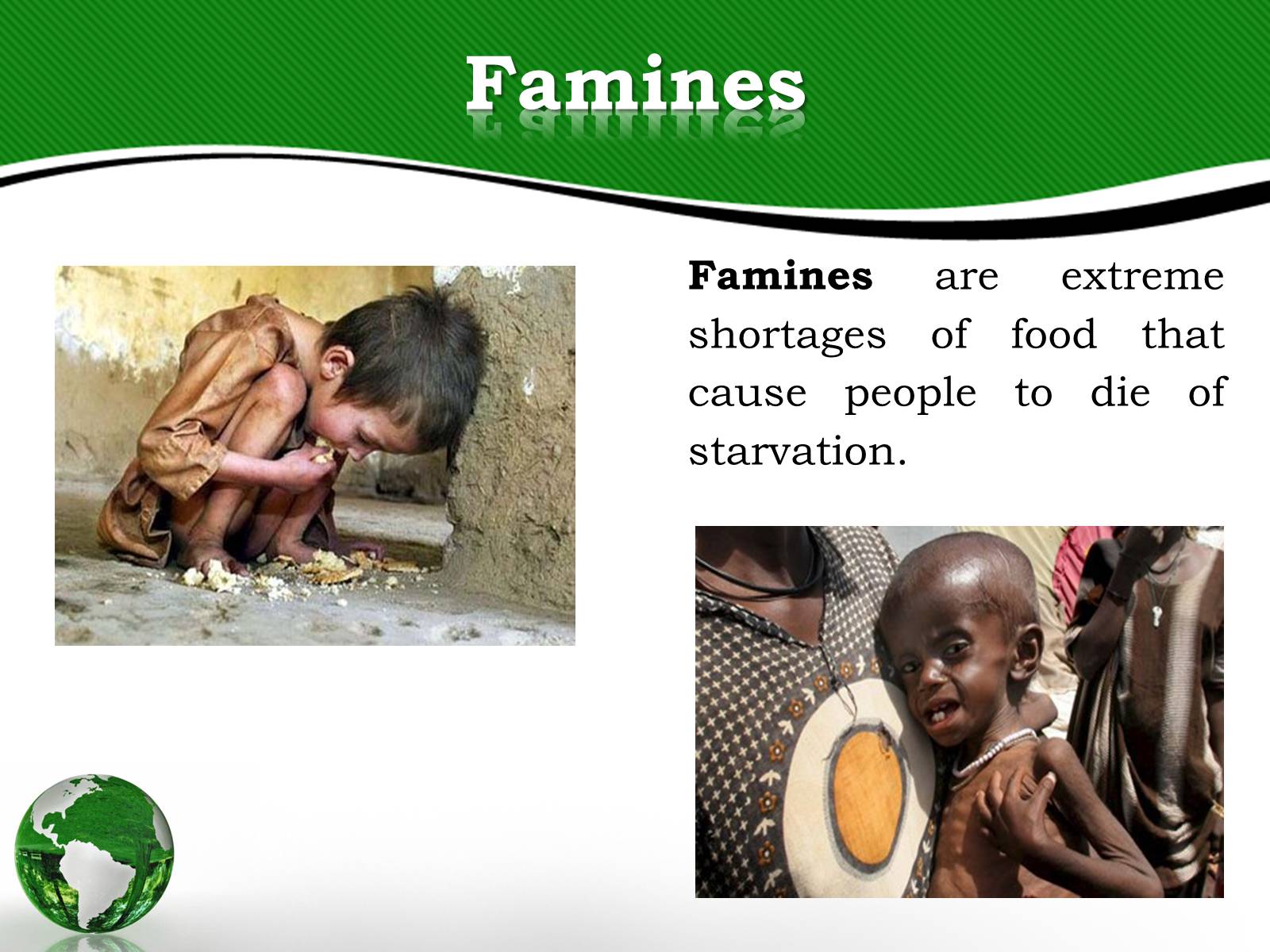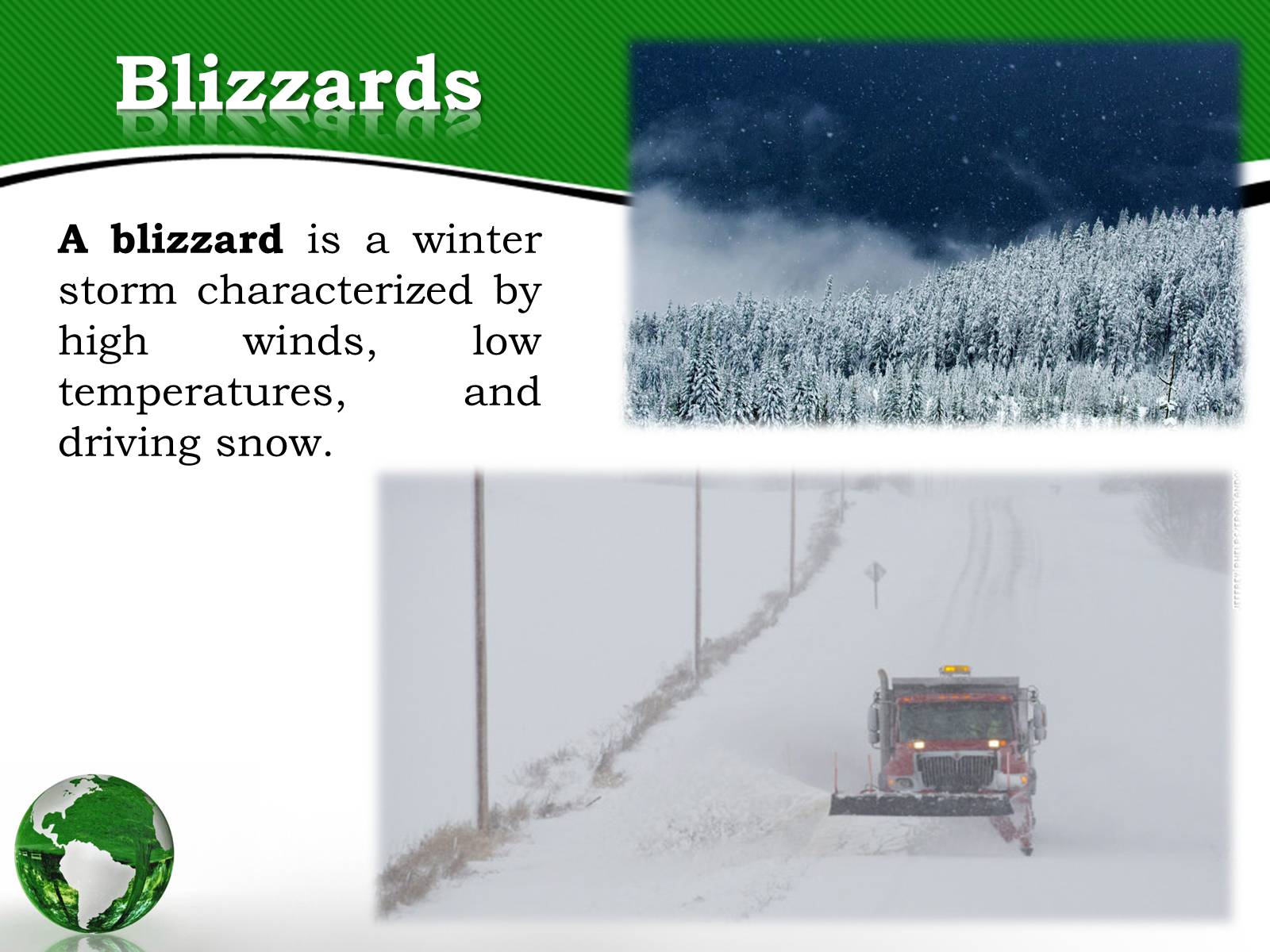- Головна
- Готові шкільні презентації
- Презентація на тему «Natural Disasters» (варіант 1)
Презентація на тему «Natural Disasters» (варіант 1)
324
Слайд #1
1
Natural Disasters
Natural Disasters

Слайд #2
Natural Disasters
Natural disasters occur when forces of nature damage the environment and manmade structures. Natural disasters can cause a great deal of human suffering. The result: people may be injured or killed, or may lose their homes and possessions.
Natural disasters occur when forces of nature damage the environment and manmade structures. Natural disasters can cause a great deal of human suffering. The result: people may be injured or killed, or may lose their homes and possessions.

Слайд #3
Avalanches
An avalanche is any swift movement of snow, ice, mud, or rock down a mountainside or slope. Avalanches are natural forms of erosion and often seasonal.
An avalanche is any swift movement of snow, ice, mud, or rock down a mountainside or slope. Avalanches are natural forms of erosion and often seasonal.

Слайд #4
Avalanches
They can reach speeds of more than 200 miles per hour.
They are triggered by such events as earthquake tremors, or human-made disturbances.
They can reach speeds of more than 200 miles per hour.
They are triggered by such events as earthquake tremors, or human-made disturbances.

Слайд #5
Landslide
A landslide or a landslip is a gradual, downslope movement of a mass bedrock. The mixture of debris from landslide with water may produce harmful lahars (mudflows).
A landslide or a landslip is a gradual, downslope movement of a mass bedrock. The mixture of debris from landslide with water may produce harmful lahars (mudflows).

Слайд #6
Droughts
Droughts are unusually long periods of insufficient rainfall.
Livestock and wildlife, as well as humans, die of thirst and famine; large land areas often suffer damage from dust storms or fire.
Droughts are unusually long periods of insufficient rainfall.
Livestock and wildlife, as well as humans, die of thirst and famine; large land areas often suffer damage from dust storms or fire.

Слайд #7
Famines
Famines are extreme shortages of food that cause people to die of starvation.
Famines are extreme shortages of food that cause people to die of starvation.

Слайд #8
Tsunamis
A tsunami is a series of huge waves that happen after an undersea disturbance, such as an earthquake or volcano eruption.
Tsunami is from the Japanese word for “harbor wave.”
A tsunami is a series of huge waves that happen after an undersea disturbance, such as an earthquake or volcano eruption.
Tsunami is from the Japanese word for “harbor wave.”

Слайд #9
Tsunamis
The waves may travel in all directions from the area of disturbance as fast as 450 miles per hour. As the big waves approach shallow waters along the coast they grow to a great height and smash into the shore. They can be as high as 100 feet.
The waves may travel in all directions from the area of disturbance as fast as 450 miles per hour. As the big waves approach shallow waters along the coast they grow to a great height and smash into the shore. They can be as high as 100 feet.

Слайд #10
Floods
A flood occurs when a body of water rises and overflows onto normally dry land. Floods occur most commonly when water from heavy rainfall, from melting ice and snow exceeds the carrying capacity of the river system, lake, or ocean into which it runs.
.
A flood occurs when a body of water rises and overflows onto normally dry land. Floods occur most commonly when water from heavy rainfall, from melting ice and snow exceeds the carrying capacity of the river system, lake, or ocean into which it runs.
.

Слайд #11
Floods

Слайд #12
Hailstorms
A hailstorm is rain drops in the form of balls or lumps of clear ice and compact snow. It is not known for sure how hailstones form and grow. Hail causes much damage and injury to crops, livestock, property, and airplanes.
A hailstorm is rain drops in the form of balls or lumps of clear ice and compact snow. It is not known for sure how hailstones form and grow. Hail causes much damage and injury to crops, livestock, property, and airplanes.

Слайд #13
Blizzards
A blizzard is a winter storm characterized by high winds, low temperatures, and driving snow.
A blizzard is a winter storm characterized by high winds, low temperatures, and driving snow.

Слайд #14
Earthquakes
An earthquake is a trembling movement of the earth's crust.
These tremors are generally caused by shifts of the plates that make up the earth's surface. The movements cause vibrations to pass through and around the earth in wave form.
An earthquake is a trembling movement of the earth's crust.
These tremors are generally caused by shifts of the plates that make up the earth's surface. The movements cause vibrations to pass through and around the earth in wave form.

Слайд #15
Volcanic eruptions, rock falls, landslides, and explosions can also cause a quake. The greatest danger of an earthquake comes from falling buildings and structures and flying glass, stones and other objects.
Earthquakes
Earthquakes

Слайд #16
Natural disasters can wipe out a country in one glance.
The victims of the destruction simply have no chance.
Parents, who can't find their sons and daughters,
Find out they are dead or washed away by waters…
Let them see sunshine again,
God, take away the storms
and pain….
The victims of the destruction simply have no chance.
Parents, who can't find their sons and daughters,
Find out they are dead or washed away by waters…
Let them see sunshine again,
God, take away the storms
and pain….
